The overriding purpose of the observance of the Passover Seder and all its many rituals, says the Torah, is v’hee-gadta l’vincha—to teach your children. To teach them their family narrative that allows them to grow from their roots, giving them the knowledge and the confidence to claim their place as children of the Jewish people who received the Torah at Sinai in all its particulars.
At a time when Jews increasingly tend away from a religiously distinct identity, preferring to put their support and sympathy with the other (sometimes even going so far as to express solidarity with those hostile to Jews and Israel—often in the name of universal values), how do we, parents, teachers, educators, advance the principle of v’hee-gadta l’vincha, specifically of ba-avur zeh asah Hashem li, bringing G-d and mitzvot into the equation?
Who better to consider this dilemma than people passionate about Jewish education? We asked several such individuals engaged in various Jewish educational models to explore this question from their unique perspectives in the field. We asked them to consider how we might better nurture Jewish children today to grow proud to identify with the Jewish people and the particulars of our tradition—the mitzvot specific to Jews and around which Jews bond with each other—as they do with its universal values.
Sustaining Judaism
Mariashi Groner
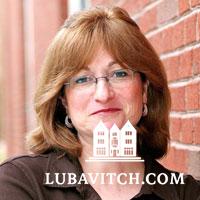
One of our Judaica teachers, Rabbi Cohen, received a phone call from a distraught mother. Their dog died suddenly, and her son, his student, was inconsolable. Even though it was ten o’clock at night, he insisted that she call Rabbi Cohen and ask him what prayer he should say for the dog.
Another one of our students fell asleep on his parents’ bed, and while they carried him back to his room, somewhat asleep, he stretched out his arm as they walked through the doorway to kiss the mezuzah.
During summer vacation, as Eve’s mom was walking through the hall gathering laundry, she heard singing in a language she couldn’t place. She peeked into her daughter’s room and saw her on her bed, singing her prayers from her siddur (prayerbook) that she learned in school. She asked her why she was praying and she said, “It makes me feel good.”
One of our Day School graduates volunteered to chair a national challah-baking project at her university, where the challah is sold to raise money for people who are hungry. She remembered that at Day School, she learned that challah-baking is a mitzvah. She shared this with her supervisor and peers and taught them that when baking challah, we separate a piece of dough that will be burned and say a blessing. She explained that it is symbolic of Temple times, when a piece of the bread was given to the Priest. In addition, it teaches us that whatever we are given is not for our use alone.
Why do these kids feel so strongly about these Jewish practices outside of the typical Jewish framework?
Why are they driven to continue to practice what they have been taught, when it is not expected? I believe that there are three foundational practices that can accomplish this goal.
A. Teaching children, especially of the elementary age, about their heritage and religion is a golden opportunity to light a fire that will continue to burn throughout adulthood. But we must take care to provide the deeper meanings, sources, and explanations for the text, history, holidays, and practice. Skimming the surface and engaging only in the superficial practices of our traditions, like gefilte fish, hamantashen and dreidels will not keep our children close. Children are capable of grasping deep, spiritual concepts. Teaching Judaism without its depth, layers, and spirituality will end up like a balloon that quickly deflates.
Posing questions that challenge status quo, like “Why can’t we use a trumpet on Rosh Hashanah instead of a shofar?” prompts them to seek the answers in our texts. Or, “How can we find G-d in the Megilla, when at first glance, He is nowhere to be seen?” Or, something even a little deeper like, “How can we leave Egypt in 2016?” since we are meant to experience redemption from slavery in our own personal lives.
B. G-d needs to be front and center. When G-d is present during the discussions, the activities, the meals, the games, the lessons, and the conclusions, children bond in shared awareness. When pulling Popsicle sticks to decide who will partner with whom in class, so that no one is hurt, we point out to the students that ultimately G-d is deciding who will be partners. When we want to eat anything, a blessing is said, creating an awareness of His presence. Judaism is not just present in the synagogue, during Judaic studies, or at lunchtime. Taking a moment to visualize the pleasure we are giving G-d when doing a mitzvah is another way to create the connections with G-d.
C. Last, but certainly not least, teachers who live what they teach, and teach what they live with joy, are the key to the longevity of the message. As important as it is to have well trained teachers in the field of education, it is just as important, if not more so, to have teachers who actually mean what they say, and say what they mean. When the teachers truly believe, live, and love what they are transmitting, the children embrace the message completely.
Graduates from our Day School return to us after college to reminisce about the “long ago” stories of courage and faith that they still remember from their elementary days. Or they come to tell us how thankful they are that the tefillot and birkat hamazon were taught so well that no matter which synagogue they go to, they seem to be one of the most comfortable attendees there. Our graduates are the ones that are excited when approached with a lulav and etrog on Sukkot or tefillin in Manhattan. They’re not groaning. They’re texting their friends and parents how cool it is that they had the opportunity to do another mitzvah.
Mariashi Groner and her husband, Rabbi Yossi Groner, are the Rebbe’s emissaries to North and South Carolina. Mariashi is the founder of The Jewish Preschool on Sardis and Director of Charlotte Jewish Day School, a Jewish community day school, member of RAVSAK – The Jewish Community Day School Network.
A Particular Lens To A Universal Perspective
Dr. Marc N. Kramer
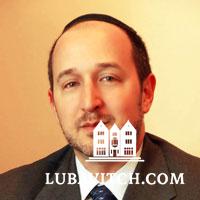
The Pew Research Center study on Jewish Americans notes that 70% of Jews in the US attend a Pesach Seder, making it the most widely celebrated Jewish ritual. Of all the myriad ways we Jews express our Jewishness, why does the Seder reign? How does a ceremonial meal predicated on the particulars of Judaism nonetheless touch the lives of so many Jews who are otherwise focused on secular living and universal values?
The answer lies, I believe, in the engaging and explicit way that the Seder blends the description of Jewish history and practice with universal themes that resonate broadly. Indeed, one might posit that the defining challenge of contemporary American Jewish life is the tension between particularism and universalism. It is increasingly difficult to hold the two in balance; the center gives way to polarization, with the more traditional Jews in the particular camp and the majority in the universal camp.
The Haggadah provides a beautiful, authentic Jewish model of balance: a particular narrative of a specific people, unfolding in ways that highlight the universal values of freedom, justice, and self-determination. Maybe it is because the Seder serves as a holding vessel for both values that even the most distant Jew manages to find his way to a Seder. Or perhaps, the Seder endures as our most cherished rite because it is rooted in questions rather than driven by answers.
The profound wisdom of the Seder, centered on the command vehigadta l’vincha, lies in having the children formulate their questions first, and only after are parents called on to fulfill their obligation to “teach your children.” When the parents do respond, they speak differently to each child, each according to his way. While the Haggadah certainly lauds the wise child, even the question of the so-called wicked son is addressed with seriousness, if rebuke. The message is palpable, powerful, and clear: there is space at the Seder table for all who show up. Skeptics who engage enrich the conversation through their questions as much as devotees do through their adhesion and wisdom.
As parents and educators, we must think like the authors of the Haggadah and empower our children to discover their own questions, to find a path to learning and meaning that arises from deep within themselves. Children should be encouraged to lead through questioning, to know that the things that cause them to wonder are wonderful and worthy of our rapt attention. We must help them understand that the questions they ask are resonant with those raised by Jewish children since the days of the very first Seder, and the answers we share are thus linked to the answers offered by our ancestors.
Of course, our call to action must go beyond words. As parents and educators, we must unabashedly embrace the particular values, customs, and mores of Judaism—yes, I mean mitzvot, and I mean a personal and communal relationship with Hashem—and demonstrate how these become a lens through which to understand and engage with universal truths. We must surround our children with differing examples of Jews who make Judaism work, highlight the joy and meaning Judaism can bring, and help them see that if we are to understand and engage with the world around us, we must first understand ourselves. It is incumbent upon us to help others see that Judaism can be the vantage point from which they view the rest of the world.
The Seder gives us a model of a Judaism that validates learners, empowers them to ask their own questions, and sets them each on his or her individual path to make meaning of our traditions. It offers an invitation to all Jews to learn, experience, and contribute, to bring their own perspectives and knowledge to bear while we forge a new shared memory rooted in our past and directed to our future. It offers our children the hopeful messages that they are capable participants in Jewish study, that Jewish ceremonies are powerful occasions to unite us, and that the diversity within the Jewish community can be a source of strength. Thus today as always, the Seder is an ideal model of Jewish education–all year round.
Dr. Marc N. Kramer is Co-Executive Director of RAVSAK: The Jewish Community Day School Network
Improving The Jewish Day School
David Magerman
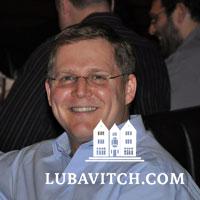
Jewish organizations everywhere are spending enormous energy to “increase” numbers. Outreach programs seek secular adults who might be brought closer to Judaism through studying Torah. NonOrthodox Jewish day schools reach out to public school and secular private school families to convince them of the yettobeappreciated value of a Jewish education. College programs, like Chabad on Campus and MEOR, inspire Jewish students to reconnect with their ancestral traditions.
Who is focusing on strengthening our core? While we fill our empty seats by pulling people from the outside, are we losing sight, even neglecting our core audience, and by extension, our Jewish mission As parents and as community members, our mission is to ensure that Jewish children are prepared to go out into the world as adults and fulfill their obligations as practicing Jews and as a light unto the nations. Today, fulfilling that mission must also focus on the core observant community. As leaders in the field of Jewish education, we need to rededicate ourselves to empowering observant families to promote the value of Jewish day school education and to transform the committed day school families into an army of day school recruiters. First, we must ask ourselves why these families are not already engaged in this task. What are we missing?
Two ingredients are lacking to make this a reality. First, day school parents must be delivered a quality product. We can no longer perpetuate the fiction that our schools are excellent and that they prepare our children for proficiency in whatever comes next. All over our nation, there’s an emerging recognition that school systems, both public and private, are failing. They haven’t changed with the times or reimagined themselves for nearly seven decades. Jewish day schools are no different and remain woefully behind the times when it comes to pedagogy and curriculum. When we, in many cases, offer a stale and inadequate product, how can we expect intelligent consumers to honestly promote the product to others? We need objective excellence in our schools if we expect our parent bodies to be honest advocates in their nonday school social circles.
But more than improving the product, we need to clarify our mission. What are we promoting when we champion Jewish day school education? It is not just about Gemara and Chumash. It’s not just about college prep and advanced placement courses. Those are all parts of a great Jewish day school education, but each one is not adequate on its own. The message of Jewish day school education is that Torah is at the center of everything, and education without Torah is pointless. At the same time, Torah education without adequate preparation for adulthood in the world is insufficient.
The Torah requires us as parents to teach our children Tanach, Talmud with all the classic commentaries, including Halakha, Aggadah, and the gamut of interpretations of Pardespeshat (literal), remez (allusion), drush (homiletic) and sod (mystical). Our children need to know how to fulfill their ritual obligations as Jews. The Torah also clearly tells us that we must teach our children to earn a living, to provide for their families. And we need to excel in all worthwhile fields of endeavor. That doesn’t mean all of our children should go to Harvard or even aspire to go to secular college. Jewish education can take many forms, and the outcomes are as varied as the Jewish souls who receive it. But we need to allow our children to achieve their educational potential, so that the next Maimonides can be both a Torah scholar of the highest esteem and also a Nobel Prizewinning physician or scientist. “Education should teach a child how to live a better life, not only for the individual, but for the advancement of society as a whole,”said the Lubavitcher Rebbe. We owe our children that opportunity.
We need to transform Jewish day school education, show parents what an excellent Jewish education can look like, and then we need to provide it. “The single most important social institution is the place where we hand on our values to the next generation – where we tell our children where we’ve come from, what ideals we fought for, and what we learned on the way. Schools are where we make children our partners in the long and openended task of making a more gracious world,” (Rabbi Lord Jonathan Sacks, From Optimism to Hope, 1984). If we can be honest with ourselves about what we are and what we aren’t, and if we can take pride in that truth, then we can put Jewish education forward as an aspiration and an ideal, not a sacrifice. Then we will only have to prepare ourselves for the onslaught of Jewish parents of all stripes begging us to let them in.
David Magerman David Magerman is president and founder of the Kohelet Foundation. David also researched artificial intelligence at the IBM T.J. Watson Research Center where he developed statistical methods for understanding speech and language. David is a founding member of the newly established Beit Moshe, a Modern Orthodox synagogue in Merion, Pennsylvania.
Teaching Na-aseh V’Nishma
Sarah Rosenfeld
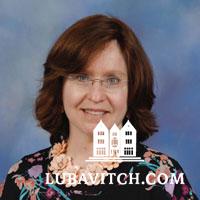
The holiday of Passover has many names reflecting the different aspects of the holiday. One name is “zman cheiruteinu,” the time of our redemption and freedom from Egypt. Many are inspired by this holiday of freedom to champion the cause of all suffering people. Yet, this attitude ignores the fact that Passover celebrates the Exodus from Egypt that occurred to a specific people for a specific purpose: to enable the children of Jacob to stand at Sinai, to become a Jewish nation by receiving the Torah and dedicating themselves to live it, learn it, and pass it on for generations to come.
So how do we pass this message on to our children and students? In many Jewish schools, Torah is treated as a textbook instead of as our G-d-given blueprint for living our lives in holiness, thereby becoming a light unto the nations. It is for this reason the Torah states (Devarim 4:6) “It is your wisdom and understanding in the eyes of the nations.” No doubt we see evidence of this throughout history, as elements of Judaism certainly have universal appeal and have thus become the foundation for other faiths as well as for the civil laws of Western society.
But we must not forget that Torah means “instruction” (Zohar III 53b). Every part of the Torah is meant to teach us something. Maimonides says: “Verses such as . . . Timna was a concubine” (Bereishit 36:12) are no different from verses such as . . . “Hear O Israel” (Devarim 6:4), since they are all from the Almighty’s mouth.”
The universal values that are recognized by the world at large are part of a greater system. As with any system, they are only as effective as their weakest links, and they depend on all elements of the system working together. Judaism, as instructed in the Torah, is a system of interrelated parts, and without the full system in play, we lose the integrity of those values embedded in it. These values then become victim to subjective, personal manipulations, and justifications. We need not look too far back in our history to see how universal values were applied by human beings to only certain segments of humanity but not to others. These warped views continue to drive our headlines today.
At Sinai we were given three types of laws: Eidut, Chukim, and Mishpatim. Laws about marking time, like Shabbat, which testifies to Creation, Passover, and Sukkot are called Eidut. Laws that seem logical and universal are called Mishpatim. These laws, such as honoring parents, not to kill, not to steal, and to be fair in judgement are easily understood; they make sense to us and are therefore easier to keep. But there is a third category called Chukim. These are laws that do not makes sense to the human being, laws for which no reason is given in the Torah. In this category we find the laws of (Kashrut), laws of purity and impurity, and the laws forbidding the mixing of wool and linen, to name just a few.
As Jews we are commanded to keep all categories with equal fervour and enthusiasm. We are explicitly taught that we do not fulfil mitzvot because they make sense or make us feel good, but because G-d has commanded us to do so. This attitude protects us from allowing our subjective opinions to decide how to implement Torah values. It is not a case of pick and choose, but a system in its entirety.
Certainly, Judaism encourages self-expression and using our rational minds to understand what we do as best we can, but that only comes after we have accepted that there is much we don’t understand; yet we commit ourselves do that too. It is for this reason that at Sinai, we said “Na’aseh v’nishma” – “we will do and we will hear,” i.e. learn and understand in that order. Our commitment to Torah makes our value system worthy of universal inspiration and guidance.
Dr. Sara Rosenfeld, Chabad representative in Melbourne, Australia since 1989, is the Director of Curriculum for Foundation (Pre-1A) to Grade 12 at Yeshivah and Beth Rivkah Colleges. She has taught high school, teacher’s training, and adult education courses across a number of schools and training institutions, and has written numerous Jewish Studies curricula that are used worldwide. An author and trainer for the Zekelman Standards for Chumash, she works for the Menachem Education Foundation.
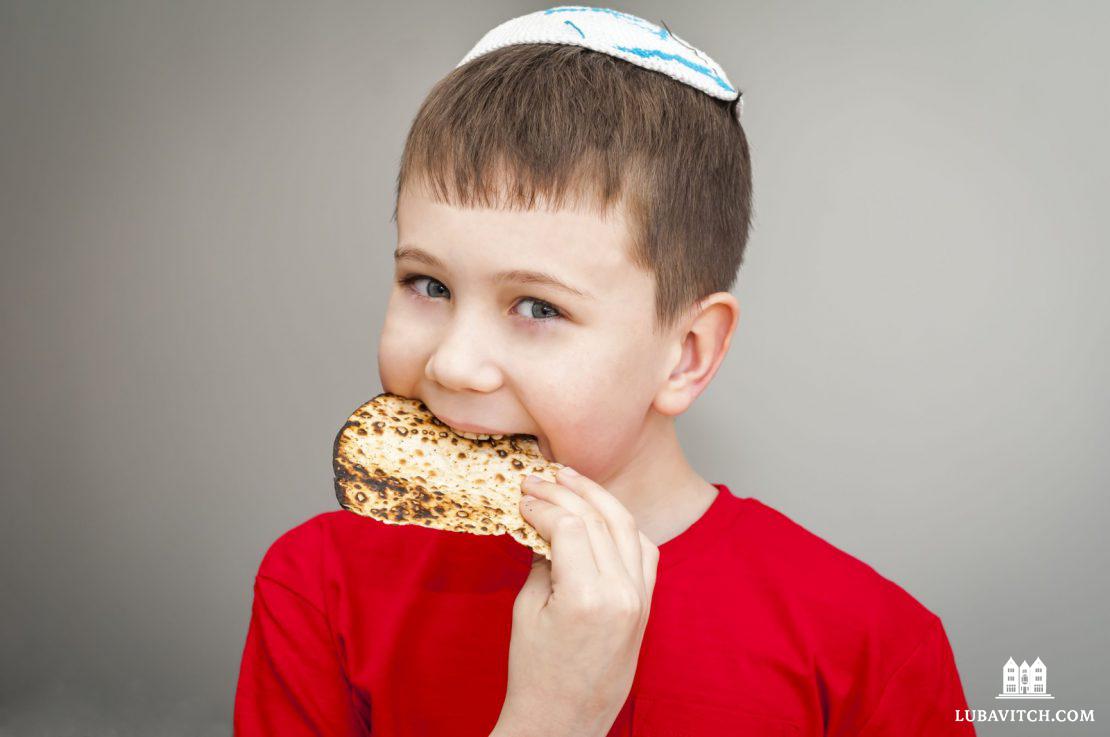
Be the first to write a comment.